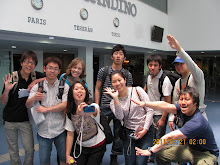
I recently attended the Association of Simulated Patient Educators (ASPE) in Baltimore. It was a great conference and I learned a lot. In particular I learned many things about training simulated patients so I can train English speaking SPs to work with our students here.
I had the chance to tour the Johns Hopkins medical school simulation center while in Baltimore. WOW! It is really amazing. It is a 5 million dollar facility that costs 1 million dollars a year to run. There are rooms that simulate

real hospital rooms, operating rooms, and ICUs. As you can see in these photos, there are high tech mannequins that students can use for training their skills in almost anything.
The simulation center also employs many simulated patients (actors) who can act out anything from a headache to a heart attack. The simulated patients help students to learn communication and physical exam skills. After a simulation, the SPs become teachers as they provide feedback and help the students to reflect on what they did well and what may need improvement.
FT

 Our leader, Tsugeru, has been doing double duty for our KGK group lately. Not only is he leading us, but he's leading us in ENGLISH! Wow!
Our leader, Tsugeru, has been doing double duty for our KGK group lately. Not only is he leading us, but he's leading us in ENGLISH! Wow!



